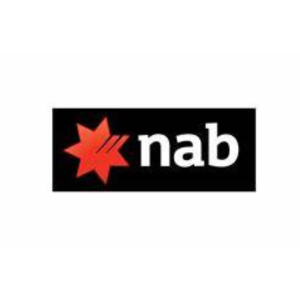Investing in Australia’s Big Four banks Commonwealth Bank of Australia (ASX: CBA), National Australia Bank (ASX: NAB), Westpac Banking Corporation (ASX: WBC), and Australia and New Zealand Banking Group (ASX: ANZ) has historically been a cornerstone of Australian portfolios. Renowned for their stability, profitability, and high dividend yields, these banks dominate the ASX and remain pivotal to Australia’s financial system. But as the economic landscape evolves, with rising interest rates, cost pressures, and digital transformation, are they still the safe bet they’ve always been? Let’s dive in.

Commonwealth Bank of Australia (CBA): The Profitability Leader

However, CBA’s substantial exposure to the residential housing market poses a notable risk. With $144.8 billion in risk-weighted assets tied to this sector, a downturn in housing could create challenges. Operating costs, too, rose due to wage inflation, reflecting broader sector trends.
Strength: High profitability and NIM leadership.
Weakness: Significant reliance on the housing market.
National Australia Bank (NAB): The Turnaround Story

Despite these positives, NAB’s profitability remains under pressure, with NIMs at 1.71% substantially lower than CBA. Rising impairments in business lending and cost pressures from wage inflation add to the challenges. Furthermore, NAB faces regulatory scrutiny over hardship notices, a potential reputational and financial risk.
Strength: Strong capital base and corporate focus.
Weakness: Lower profitability and ongoing regulatory issues.
Westpac Banking Corporation: The Mixed Performer

However, rising costs, largely attributed to technology investments and inflation, have outpaced peers. Mortgage delinquencies ticked up to 1.05%, signaling potential stress in its residential portfolio. While its digital transformation initiatives, like anti-fraud measures, have shown promise, the broader cost structure remains a concern.
Strength: Investments in technology and digital transformation.
Weakness: High operating costs and concentration risks.
Australia and New Zealand Banking Group (ANZ): The Diversified Challenger

However, like its peers, ANZ faces rising costs due to inflation and competitive pressures in lending. While its CET1 ratio of 12.2% reflects capital strength, the bank must sustain this momentum to remain competitive.
Strength: Diversified portfolio and customer base.
Weakness: Rising costs and modest NIMs.
The Big Picture: Resilience Amid Challenges
The resilience of Australia’s Big Four banks in the face of economic headwinds is impressive. Rising interest rates have bolstered profitability by improving NIMs, yet the rapid pace of rate hikes has not led to significant stress on their balance sheets. Despite modest upticks in mortgage delinquencies, borrowers remain surprisingly resilient, and credit impairments across the sector have been minimal.
However, valuations for the Big Four banks appear stretched, especially for CBA, trading at north of 25x earnings. NAB, Westpac, and ANZ offer more reasonable valuations but come with distinct risks. With future growth likely tied to the residential property market, volume growth in this sector will be critical.
TAMIM Takeaway: Where Do We Stand?
Australia’s Big Four banks remain well-capitalised institutions with impressive operational resilience. For investors, the question isn’t whether these banks are strong, they are, but whether their current valuations offer sufficient upside to justify the risks.
- Best Performer: CBA retains its title as the profitability leader, but its hefty valuation and housing exposure make it a cautious buy.
- Momentum Play: NAB shows steady operational improvement, though regulatory scrutiny is a wildcard.
- Value Pick: ANZ offers the most compelling risk-reward balance, with diversification and a reasonable valuation.
- Wildcard: Westpac needs to tame its rising costs to fully capitalise on its digital investments.
At TAMIM, we recommend a selective approach. While the Big Four banks offer reliable income and defensive qualities, their valuations suggest limited room for error. Investors should prioritise banks that manage costs effectively, adapt to digital demands, and maintain strong governance. In the dynamic Australian banking sector, resilience and disciplined growth remain key.
__________________________________________________________________________________________
Disclaimer: Commonwealth Bank of Australia (ASX: CBA), National Australia Bank (ASX: NAB) and Australia and New Zealand Banking Group (ASX: ANZ) are held in TAMIM Portfolios as at date of article publication. Holdings can change substantially at any given time.
